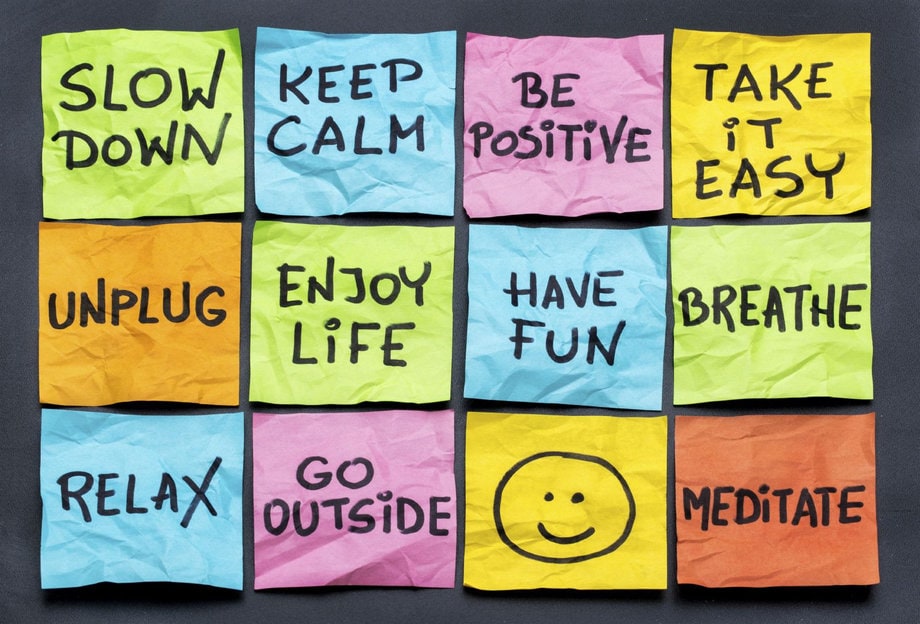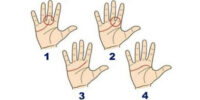What Are The Best Stress-Relief Techniques For Hypertension Management?

Hypertension, also known as high blood pressure, is a prevalent chronic condition affecting a substantial proportion of the global population. It is a major risk factor for various cardiovascular diseases and is associated with significant morbidity and mortality rates. Stress is recognized as a significant contributor to the development and exacerbation of hypertension. Consequently, stress management plays a crucial role in hypertension management.
This article aims to explore the best stress-relief techniques for hypertension management. By employing an objective and impersonal approach, the article will evaluate various stress-relief techniques, including:
- Deep breathing exercises
- Meditation
- Physical activity
- Relaxation techniques
- Mindfulness
- Healthy diet
- Sleep hygiene
- Social support
The objective of this article is to provide evidence-based recommendations for individuals with hypertension to effectively manage stress and improve their overall well-being.
Key Takeaways
- Relaxation techniques such as guided imagery and creating a calming environment can help reduce stress, anxiety, and blood pressure.
- Mindfulness practice can lower blood pressure by identifying stress triggers, developing healthier coping mechanisms, and promoting the relaxation response.
- Following a healthy diet that is rich in fruits, vegetables, whole grains, and lean proteins, while also reducing sodium, saturated fat, and added sugar intake, can promote cardiovascular health.
- Establishing a consistent sleep routine, practicing good sleep hygiene, and creating a sleep-friendly environment can improve sleep quality and play a crucial role in managing hypertension.
Deep Breathing Exercises
Deep breathing exercises have been identified as a beneficial stress-relief technique for managing hypertension due to their ability to activate the body’s relaxation response and reduce blood pressure levels.
Deep breathing involves taking slow, deep breaths, focusing on inhaling deeply through the nose and exhaling fully through the mouth. This technique helps to slow down the heart rate and relax the muscles, promoting a sense of calm and reducing stress.
Additionally, incorporating progressive muscle relaxation techniques alongside deep breathing exercises can further enhance their stress-relieving effects. Progressive muscle relaxation involves tensing and then releasing different muscle groups in the body, helping to release tension and promote relaxation.
By regularly practicing deep breathing exercises and progressive muscle relaxation, individuals with hypertension can effectively manage their stress levels and potentially lower their blood pressure.
Meditation
Meditation is a practice that has been found to effectively reduce stress and lower blood pressure.
Studies have shown that regular meditation can activate the body’s relaxation response, which helps to counteract the effects of stress on the body, including elevated blood pressure.
There are various meditation techniques that individuals can try, such as mindfulness meditation, transcendental meditation, and loving-kindness meditation, each offering its own unique benefits for stress relief and hypertension management.
How meditation can reduce stress and lower blood pressure
One effective stress-relief technique for hypertension management involves engaging in the practice of mindfulness. Meditation, a form of mindfulness, has been shown to have numerous benefits for reducing stress and lowering blood pressure.
Here are four ways in which meditation can help in managing hypertension:
- Stress reduction: Meditation helps individuals relax and cultivate a sense of calm, reducing the physiological effects of stress on the body.
- Blood pressure regulation: Regular practice of meditation has been linked to lower blood pressure, potentially reducing the risk of hypertension-related complications.
- Improved emotional well-being: Meditation promotes emotional stability and resilience, enabling individuals to better cope with stressors that may contribute to hypertension.
- Mind-body connection: By focusing attention on the present moment, meditation enhances self-awareness and helps individuals recognize and regulate their body’s response to stress.
Overall, incorporating meditation techniques into a hypertension management plan can provide valuable stress relief and contribute to better overall health.
Different meditation techniques to try
A variety of mindfulness-based practices can be explored to enhance relaxation and promote well-being. Different meditation techniques offer various ways to achieve a calm and focused state of mind. One popular technique is focused attention meditation, where individuals concentrate their attention on a specific object or sensation, such as the breath or a mantra. This technique helps to cultivate concentration and redirect the mind from stressful thoughts. Another technique is loving-kindness meditation, which involves cultivating feelings of compassion and love towards oneself and others. This practice has been shown to reduce stress and increase feelings of well-being. Deep breathing exercises are also commonly used in meditation, as they help to relax the body and calm the mind. By incorporating these different meditation techniques, individuals can find the approach that best suits their needs and effectively manage stress and hypertension.
| Technique | Description | Benefits |
|---|---|---|
| Focused attention | Concentrating on a specific object or sensation | Cultivates concentration, reduces stress |
| Loving-kindness | Cultivating feelings of compassion and love towards oneself and others | Reduces stress, increases well-being |
| Deep breathing exercises | Utilizing deep breaths to relax the body and calm the mind | Promotes relaxation, reduces stress and hypertension |
Physical Activity
Physical activity has been found to have a significant impact on reducing stress levels.
Engaging in regular exercise has been shown to increase the production of endorphins, which are natural mood boosters.
For individuals with hypertension, it is recommended to engage in aerobic activities such as brisk walking, swimming, or cycling, as these types of exercises have been shown to effectively lower blood pressure.
The link between exercise and stress reduction
Engaging in regular physical activity has been shown to have a profound impact on stress reduction and can significantly contribute to the management of hypertension.
Numerous studies have demonstrated the positive effects of exercise on stress levels. Exercise benefits individuals by increasing the production of endorphins, which are known as ‘feel-good’ hormones that promote relaxation and improve mood.
Furthermore, exercise routines provide a distraction from daily stressors, allowing individuals to focus on the physical activity at hand rather than their worries.
Regular exercise also helps to regulate blood pressure, improve cardiovascular health, and reduce the risk of developing hypertension.
It is recommended that individuals engage in at least 150 minutes of moderate-intensity aerobic exercise or 75 minutes of vigorous-intensity aerobic exercise per week to experience the stress-reducing benefits of physical activity.
Recommended types of physical activity for hypertension management
To effectively manage hypertension, it is recommended to incorporate various types of physical activities into one’s routine.
When it comes to choosing the right types of physical activity for hypertension management, both cardiovascular and resistance exercises have been found to be beneficial.
Cardiovascular exercises, such as brisk walking, cycling, swimming, and jogging, help to improve heart health and blood circulation, thus reducing blood pressure levels.
Resistance exercises, on the other hand, involve working against resistance, such as lifting weights or using resistance bands, and help to strengthen muscles, including the heart.
Engaging in a combination of both types of exercises can have synergistic effects on hypertension management.
Regular physical activity not only helps to lower blood pressure, but it also improves overall cardiovascular fitness, reduces stress, and promotes overall well-being.
Relaxation Techniques
This paragraph will discuss three relaxation techniques that can be used for hypertension management:
- Progressive muscle relaxation involves tensing and then relaxing different muscle groups throughout the body to promote relaxation and reduce stress.
- Guided imagery involves using mental imagery to create a calming and peaceful environment.
- Visualization involves imagining oneself in a positive and stress-free situation.
These techniques can be effective in reducing stress and promoting relaxation, making them valuable tools for managing hypertension.
Progressive muscle relaxation
One effective stress-relief technique for hypertension management is progressive muscle relaxation. This technique involves systematically tensing and then relaxing different muscle groups in order to reduce muscle tension and promote overall relaxation.
Progressive muscle relaxation can be practiced with the guidance of a therapist or through the use of audio recordings. Additionally, it can be combined with other relaxation techniques such as guided imagery and visualization.
Guided imagery involves using mental images to create a calming and soothing experience, while visualization involves mentally picturing oneself in a peaceful and stress-free environment.
When combined with progressive muscle relaxation, these techniques can enhance the overall effectiveness of stress relief and contribute to better management of hypertension.
Guided imagery and visualization
Guided imagery and visualization techniques transport the mind to a tranquil, stress-free oasis where the body can find solace and relaxation. These techniques involve using mental images to create a calming and peaceful environment within the mind.
Guided imagery techniques typically involve listening to an audio recording or following a script that guides the individual through a series of vivid and detailed mental images. Visualization exercises, on the other hand, require the individual to create their own mental images without any external guidance.
Both techniques aim to engage the senses and promote deep relaxation by focusing the mind on pleasant and calming experiences. Research suggests that guided imagery and visualization techniques can effectively reduce stress and anxiety, lower blood pressure, and improve overall well-being.
These techniques can be easily incorporated into daily routines and offer a convenient and accessible means of managing hypertension.
Mindfulness
Mindfulness practice has been shown to effectively reduce stress and lower blood pressure levels in individuals with hypertension. Mindfulness exercises involve focusing one’s attention on the present moment without judgment. This practice encourages individuals to become fully aware of their thoughts, feelings, and bodily sensations.
The benefits of mindfulness for hypertension management include:
- Stress reduction: Mindfulness helps individuals to become aware of their stress triggers and develop healthier coping mechanisms. This can lead to a reduction in stress levels, which is crucial for managing hypertension.
- Blood pressure regulation: Studies have found that mindfulness practice can help lower blood pressure levels in individuals with hypertension. This may be due to the relaxation response triggered by mindfulness, which helps to reduce the constriction of blood vessels.
- Improved emotional well-being: Mindfulness has been shown to enhance emotional well-being by reducing symptoms of anxiety and depression. This can have a positive impact on overall cardiovascular health and hypertension management.
Incorporating mindfulness exercises into a hypertension management plan can provide individuals with valuable tools for stress reduction and blood pressure control.
Healthy Diet
To effectively manage hypertension, incorporating a healthy diet is essential. Healthy eating plays a crucial role in maintaining blood pressure within a normal range.
A diet rich in fruits, vegetables, whole grains, and lean proteins has been linked to lower blood pressure levels. Specifically, individuals should focus on consuming foods that are low in sodium, saturated fats, and added sugars.
Some nutrition tips for managing hypertension include reducing salt intake, increasing potassium consumption, and limiting alcohol and caffeine intake. Additionally, it is important to maintain a balanced diet that includes adequate amounts of calcium and magnesium.
Adopting a healthy diet not only helps to control blood pressure but also promotes overall cardiovascular health. Therefore, incorporating nutrition-focused strategies into one’s lifestyle can be an effective stress-relief technique for hypertension management.
Sleep Hygiene
Sleep hygiene is an essential aspect of maintaining overall health and well-being, as it greatly influences the quality and duration of sleep, which in turn impacts various physiological and psychological processes.
To improve sleep quality and manage hypertension, individuals should establish a consistent bedtime routine. This routine can include activities such as taking a warm bath, reading a book, or practicing relaxation techniques.
Additionally, it is important to create a sleep-friendly environment by ensuring the room is cool, dark, and quiet. Avoiding electronic devices before bedtime and setting a regular sleep schedule can also promote better sleep.
By implementing these sleep hygiene practices, individuals can enhance the quality and duration of their sleep, which can play a crucial role in managing hypertension.
Social Support
Social support plays a crucial role in stress reduction, especially in the context of hypertension management.
Research has shown that individuals with strong social connections tend to have lower blood pressure and are better equipped to handle stressful situations.
Building and maintaining a support network can be achieved through various means, such as participating in social activities, joining support groups, or seeking professional help to enhance interpersonal relationships.
One key factor in stress reduction and hypertension management is the significant impact that social connections have on individuals. The role of community and the impact of social isolation play a crucial part in managing stress levels and ultimately, hypertension. Social connections provide emotional support, companionship, and a sense of belonging, which can help individuals cope with stress more effectively. Research has shown that individuals with strong social networks tend to have lower blood pressure and reduced risk of developing hypertension. On the other hand, social isolation and lack of social support can lead to increased stress levels and higher blood pressure. Therefore, fostering social connections and maintaining a strong support system is essential for managing stress and improving overall cardiovascular health.
| Positive Impact of Social Connections | Negative Impact of Social Isolation |
|---|---|
| Emotional support | Increased stress levels |
| Companionship | Higher blood pressure |
| Sense of belonging | Greater risk of developing hypertension |
Ways to build and maintain a support network
Establishing and maintaining a robust support network can significantly enhance an individual’s emotional well-being and foster a sense of belonging, which is crucial for effectively managing stress and improving cardiovascular health.
Building friendships is an essential component of building a strong support network. Engaging in social activities and joining clubs or organizations with similar interests can provide opportunities to meet new people and develop meaningful connections.
Additionally, seeking professional help can also be beneficial in building and maintaining a support network. Mental health professionals, such as therapists or counselors, can provide guidance and support in navigating stress and building healthy relationships. Their expertise can help individuals develop effective coping strategies, improve communication skills, and address any underlying issues that may hinder the formation of a support network.
By actively building and maintaining a support network, individuals can better manage stress and improve their overall well-being.
Frequently Asked Questions
How long does it take for deep breathing exercises to have an effect on hypertension?
The effectiveness and duration of deep breathing exercises on hypertension vary depending on various factors such as individual response, frequency of practice, and severity of hypertension. Further research is needed to establish a specific time frame for noticeable effects.
Can meditation alone be an effective treatment for hypertension?
Meditation alone can be an effective treatment for hypertension. It has been found to have numerous benefits, including reducing blood pressure, improving cardiovascular health, and promoting relaxation and stress reduction.
What type of physical activity is best for managing hypertension?
Yoga and swimming have been shown to be effective physical activities for managing hypertension. These activities can help lower blood pressure, improve cardiovascular health, and reduce stress, contributing to better hypertension management.
Are there any specific relaxation techniques that are recommended for hypertension management?
Mindfulness exercises and progressive muscle relaxation are recommended relaxation techniques for hypertension management. These techniques have been shown to reduce stress levels and promote relaxation, which can help lower blood pressure and manage hypertension.
Social support plays a significant role in the management of hypertension. Research suggests that individuals with strong social support systems are more likely to engage in healthy behaviors, such as practicing deep breathing exercises, which can help lower blood pressure.









